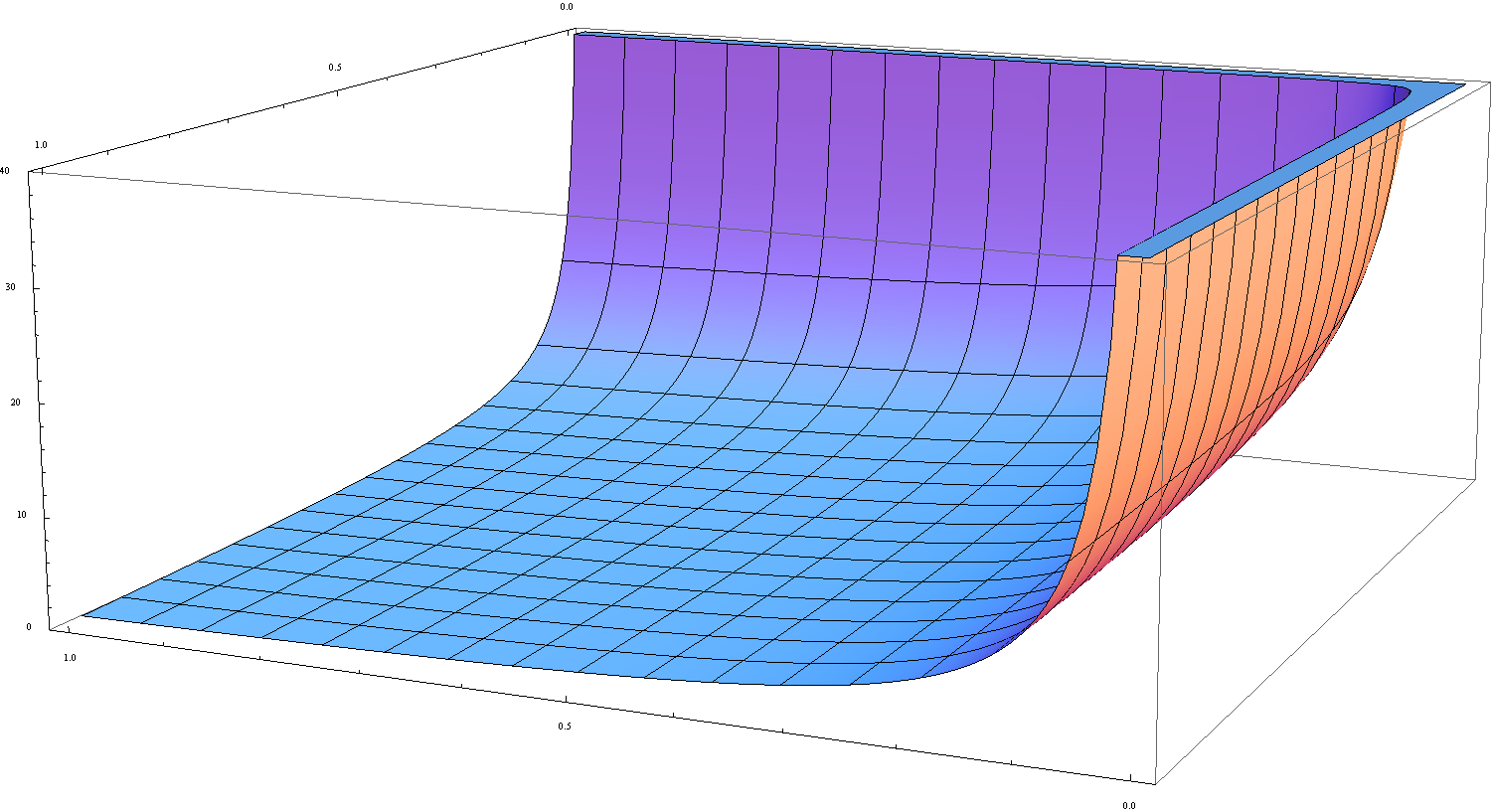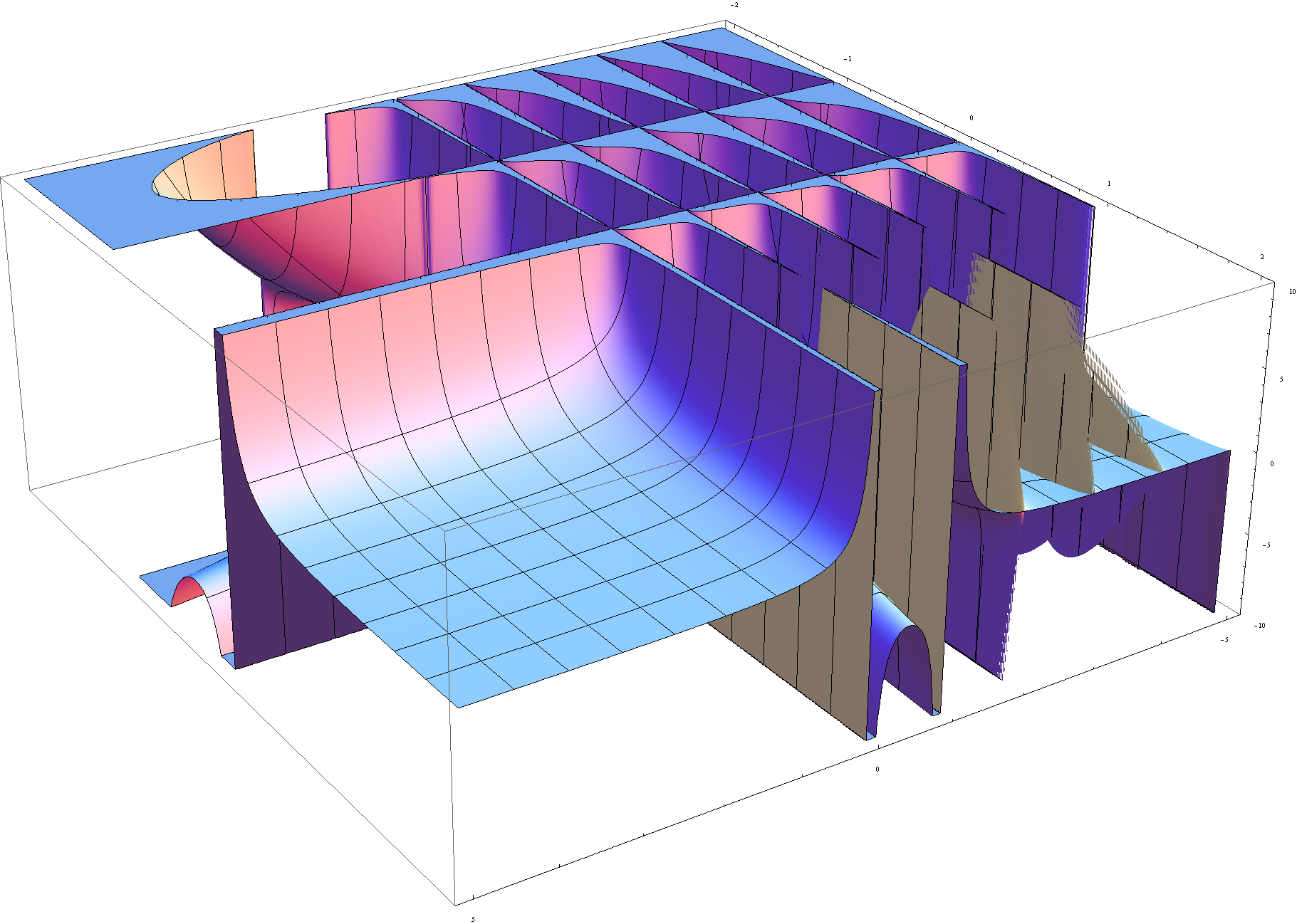Beta
The beta function is defined by the formula $$B(x,y)=\displaystyle\int_0^1 t^{x-1}(1-t)^{y-1}dt.$$
Contents
Properties
Theorem: $B(x,y)=B(y,x)$
Proof: █
Theorem: (i) $B(x+1,y)=\dfrac{x}{x+y} B(x,y)$
(ii) $B(x,y+1)=\dfrac{y}{x+y}B(x,y)$
Proof: █
Theorem
The following formula holds: $$B(x,y)=\dfrac{\Gamma(x)\Gamma(y)}{\Gamma(x+y)},$$ where $B$ denotes the beta function and $\Gamma$ denotes the gamma function.
Proof
References
- 1964: Milton Abramowitz and Irene A. Stegun: Handbook of mathematical functions ... (previous) ... (next): $6.2.2$
Theorem
The following formula holds: $$B(x,y)=2 \displaystyle\int_0^{\frac{\pi}{2}} (\sin t)^{2x-1}(\cos t)^{2y-1} \mathrm{d}t,$$ where $B$ denotes the beta function, $\sin$ denotes the sine function, and $\cos$ denotes the cosine function.
Proof
From the definition, $$B(x,y)=\displaystyle\int_0^1 \xi^{x-1} (1-\xi)^{y-1} \mathrm{d}\xi.$$ Let $\xi=\sin^2(t)$. Then $d\xi = 2\sin(t)\cos(t)$. Also if $\xi=0$ then $0=\sin^2(t)$ implies that $t=\arcsin(0)=0$ and if $\xi=1$, then $1=\sin^2(t)$ implies $t=\arcsin(1)=\dfrac{\pi}{2}$. Therefore using substitution and the Pythagorean identity for sin and cos, $$\begin{array}{ll} B(x,y) &= \displaystyle\int_0^1 \xi^{x-1}(1-\xi)^{y-1} \mathrm{d}\xi \\ &= \displaystyle\int_0^{\frac{\pi}{2}} (\sin(t))^{2x-2} (1-\sin^2(t))^{y-1} 2 \sin(t)\cos(t) \mathrm{d}t \\ &= 2 \displaystyle\int_0^{\frac{\pi}{2}} (\sin(t))^{2x-1} (\cos(t))^{2y-1} \mathrm{d}t, \end{array}$$ as was to be shown. █
References
- 1953: Arthur Erdélyi, Wilhelm Magnus, Fritz Oberhettinger and Francesco G. Tricomi: Higher Transcendental Functions Volume I ... (previous) ... (next): $\S 1.5 (19)$
- 1964: Milton Abramowitz and Irene A. Stegun: Handbook of mathematical functions ... (previous) ... (next): $6.2.1$
References
Bell. Special Functions
Special functions by Leon Hall

